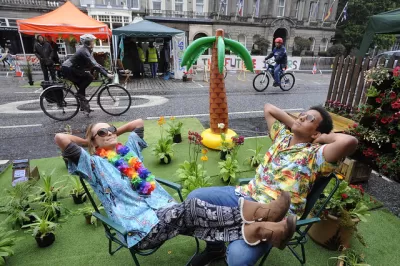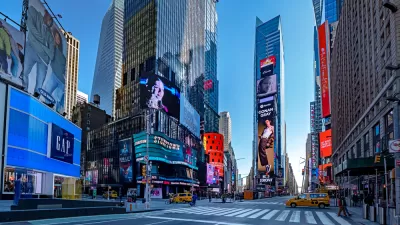Cities have survived terrible infectious diseases before, because the power of concentrated human and economic activity is just so strong. When it’s time to reopen U.S. cities, a few key actions will ensure the future safety and health of all.

Richard Florida and Steven Pedigo write on the inevitability of cities opening for business after the coronavirus has subsided, and what steps cities can take to reopen safely, and prevent future outbreaks of this pandemic of other deadly diseases in the future.
Our mayors, governors, and community leaders must do whatever is necessary to get their cities back up and running as soon as they safely can. After, we will need plans in place to prepare for future pandemics, and any social or economic lockdowns they necessitate. The federal government must do its part too, with bold and unprecedented programs to bolster the economic situation of our states and cities as well as our workers and business, especially small business.
The article includes a few key recommendations for how to accomplish those goals, like modifying vital infrastructure, readying key anchor institutions, supporting “Main Street,” and more, with a lot more detail included in the source article.
FULL STORY: How our cities can reopen after the COVID-19 pandemic

Trump Administration Could Effectively End Housing Voucher Program
Federal officials are eyeing major cuts to the Section 8 program that helps millions of low-income households pay rent.

Planetizen Federal Action Tracker
A weekly monitor of how Trump’s orders and actions are impacting planners and planning in America.

Ken Jennings Launches Transit Web Series
The Jeopardy champ wants you to ride public transit.

Washington Legislature Passes Rent Increase Cap
A bill that caps rent increases at 7 percent plus inflation is headed to the governor’s desk.

From Planning to Action: How LA County Is Rethinking Climate Resilience
Chief Sustainability Officer Rita Kampalath outlines the County’s shift from planning to implementation in its climate resilience efforts, emphasizing cross-departmental coordination, updated recovery strategies, and the need for flexible funding.

New Mexico Aging Department Commits to Helping Seniors Age ‘In Place’ and ‘Autonomously’ in New Draft Plan
As New Mexico’s population of seniors continues to grow, the state’s aging department is proposing expanded initiatives to help seniors maintain their autonomy while also supporting family caregivers.
Urban Design for Planners 1: Software Tools
This six-course series explores essential urban design concepts using open source software and equips planners with the tools they need to participate fully in the urban design process.
Planning for Universal Design
Learn the tools for implementing Universal Design in planning regulations.
Heyer Gruel & Associates PA
Ada County Highway District
Institute for Housing and Urban Development Studies (IHS)
City of Grandview
Harvard GSD Executive Education
Toledo-Lucas County Plan Commissions
Salt Lake City
NYU Wagner Graduate School of Public Service





























